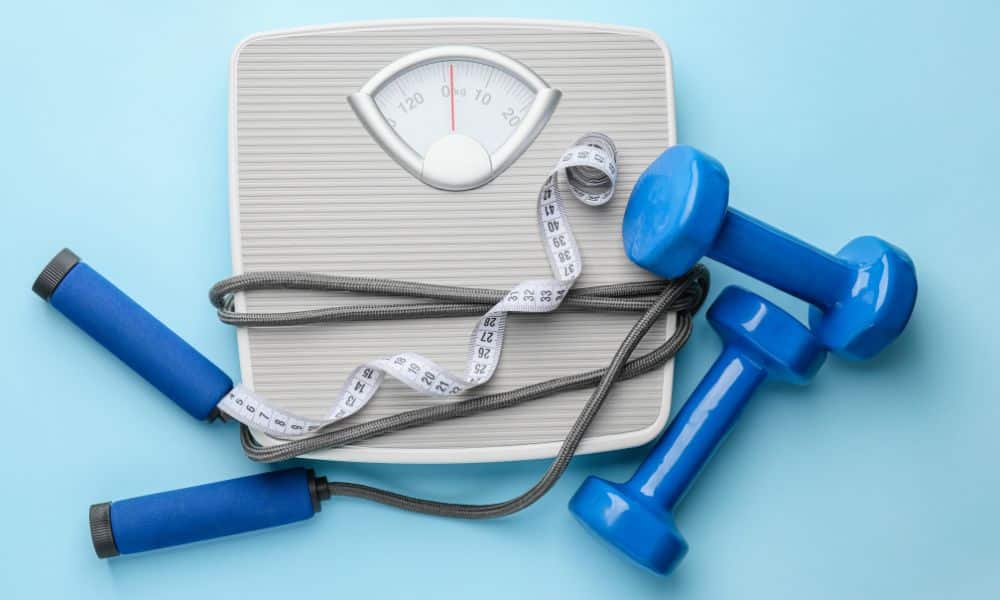Body fat is a crucial component of the human body, serving as a source of energy and a vital element for various bodily functions. It comprises fat cells, also known as adipocytes, which store energy as fat. Body fat plays several crucial roles in the body, including insulation to help regulate body temperature, cushioning to protect organs, and serving as a significant energy reserve.
Types of Body Fat
There are two main types of body fat: essential fat and storage fat. Essential fat is necessary for normal physiological functions. It is found in the marrow of bones, the heart, lungs, liver, spleen, kidneys, intestines, muscles, and lipid-rich tissues of the central nervous system. In men, essential fat constitutes approximately 3% of body weight; in women, it’s about 12%, reflecting the additional fat necessary for childbearing and other hormonal functions.
Storage fat, on the other hand, accumulates under the skin (subcutaneous fat) and around internal organs (visceral or intra-abdominal fat). While subcutaneous fat plays a significant role in insulation and energy storage, visceral fat is associated with several health risks, including cardiovascular diseases, type 2 diabetes, and certain cancers. Body fat distribution can vary significantly between individuals, influenced by genetics, diet, exercise, and overall lifestyle.
Body Fat Percentage
Body fat percentage, which measures the fat relative to the body’s total weight, is a crucial indicator of physical fitness and health. Healthy body fat percentages vary by sex and age, but maintaining a body fat percentage within a recommended range is essential for overall health and well-being. Excess body fat, especially visceral fat, can lead to various health issues, underscoring the importance of a balanced diet and regular exercise in managing body fat levels effectively.

Body Fat Storage
Body fat is a crucial component of the human body, serving as a primary form of energy storage, insulation, and protection for internal organs. It comprises fat cells, or adipocytes, which can store energy as triglycerides. Body fat is categorized into two main types: essential fat and storage fat. Essential fat is necessary for physiological functions and is found in the marrow of bones, heart, lungs, liver, spleen, kidneys, intestines, muscles, and lipid-rich tissues of the central nervous system. In contrast, storage fat accumulates in adipose tissue, serving as an energy reserve.
The body stores excess body fat due to a caloric surplus, which occurs when the number of calories consumed exceeds the number of calories burned through daily activities and metabolic processes. Several factors contribute to the accumulation of too much body fat, including:
- Poor Diet: Consuming foods high in fats, sugars, and calories can lead to a caloric surplus, especially if these foods lack nutritional value and are not balanced with fruits, vegetables, and whole grains.
- Physical Inactivity: A sedentary lifestyle minimizes the number of calories burned, reducing the body’s need for energy and leading to fat accumulation.
- Genetics: Genetic predisposition can influence body fat distribution and the propensity to store fat. Some individuals may be genetically inclined to store more fat than others.
- Hormonal Imbalances: Hormones play a significant role in regulating metabolism, appetite, and fat distribution. Imbalances in hormones such as insulin, cortisol, thyroid hormones, and sex hormones can contribute to the accumulation of body fat.
- Sleep Deprivation: Lack of sleep can disrupt hormonal balance, including hormones that regulate appetite and metabolism, leading to increased hunger and decreased metabolic rate, contributing to fat gain.
- Stress: Chronic stress can lead to elevated cortisol levels, a hormone promoting fat storage, particularly in the abdominal area.
- Age: As people age, the metabolic rate tends to slow, and muscle mass decreases, leading to more accessible fat accumulation if calorie intake is not adjusted accordingly.
Addressing these factors through a balanced diet, regular physical activity, adequate sleep, stress management, and, when necessary, medical intervention can help prevent and reduce excess body fat. Understanding the causes of body fat accumulation is crucial for developing effective strategies for fat loss and maintaining overall health and fitness.

The Best Way to Lose Excessive Body Fat
Losing excessive body fat is a common goal for many individuals, aiming not only for aesthetic improvements but also for better health and wellness. Shedding unwanted fat involves a multifaceted approach, focusing on diet, exercise, and lifestyle changes. Here’s a comprehensive guide to understanding and achieving effective fat loss. Here are the key strategies:
1. Nutrition
- Caloric Deficit: Consume fewer calories than your body burns. A deficit of 500-1000 calories daily can lead to a safe weight loss of 1-2 pounds per week.
- Whole Foods: Emphasize whole, nutrient-dense foods like vegetables, fruits, lean proteins, and whole grains.
- Hydration: Drink plenty of water throughout the day to support metabolism and reduce appetite.
2. Exercise
- Strength Training: Builds muscle mass, which increases metabolic rate, helping the body burn more calories even at rest.
- Cardiovascular Exercise: Walking, running, cycling, or swimming increases calorie burn and improves heart health.
- Consistency: Regular physical activity is crucial in burning excess fat and improving overall fitness.
3. Lifestyle Adjustments
- Sleep: Aim for 7-9 hours of quality sleep per night to support recovery and hormonal balance.
- Stress Management: Practice stress-reducing techniques such as meditation, yoga, or deep breathing exercises.
- Accountability: Keep a food and exercise journal or work with a professional to stay on track.
Losing excessive body fat is a journey that requires patience, commitment, and a balanced approach. Individuals can achieve sustainable fat loss and improve their health by focusing on nutritious eating, regular physical activity, and healthy lifestyle habits. Remember, the best approach can be maintained long-term, leading to lasting changes and a healthier, more vibrant life.

Fat Loss Goals
Aiming for a healthy rate of body fat loss is crucial to ensure that the lost weight is primarily fat rather than muscle or water weight and to maintain overall health and well-being. The general recommendation for weight loss, which predominantly focuses on fat loss, is to aim for about 1 to 2 pounds (approximately 0.45 to 0.9 kilograms) per week. This loss rate is considered safe, sustainable, and likely to help keep the weight off in the long term.
Understanding the Caloric Deficit
Create a caloric deficit to lose body fat, consuming fewer calories than your body expends. A deficit of approximately 3,500 to 7,000 calories per week can result in losing 1 to 2 pounds of body fat. This translates to a daily caloric deficit of about 500 to 1,000 calories. Achieving this deficit can be done through a combination of reducing calorie intake and increasing physical activity.
Why a Slow and Steady Approach?
- Sustainability: A moderate pace of weight loss is easier to maintain over time, allowing for adopting healthy eating and exercise habits that can be sustained long-term.
- Muscle Preservation: Rapid weight loss can lead to significant muscle loss, decreasing metabolic rate and physical strength. A gradual approach helps preserve muscle mass while losing fat.
- Nutritional Adequacy: Losing weight slowly ensures you can consume a nutritionally adequate diet that provides sufficient energy and nutrients to support overall health.
Factors to Consider
- Individual Differences: The appropriate rate of fat loss can vary based on personal factors, including starting weight, body composition, and metabolic health. Those with more body fat may initially experience faster weight loss without negative effects.
- Goal Setting: Setting realistic goals is key. Aiming for a specific percentage of body fat loss rather than just weight loss can be more effective for improving body composition and health.
- Professional Guidance: Consulting with healthcare providers or a registered dietitian can provide personalized advice tailored to individual health needs and goals.
While the goal of losing 1 to 2 pounds per week is a general guideline, it’s important to focus on making healthy lifestyle changes rather than fixating solely on numbers. Incorporating balanced nutrition, regular physical activity, adequate sleep, and stress management into your routine can lead to sustainable fat loss and improved health. Remember, the journey to losing body fat is a marathon, not a sprint, requiring patience, persistence, and a positive mindset.

Relationship Between Muscle and Body Fat
The relationship between muscle and body fat is fundamental to physical fitness and overall health. This relationship is often discussed in terms of body composition, which is the ratio of fat to lean tissue, including muscle, in the body. Understanding this relationship is crucial for anyone looking to improve their health, alter their physical appearance, or enhance their athletic performance. Here are the key points that highlight the relationship between muscle and body fat:
1. Metabolic Rate
- Muscle Mass Increases Metabolism: Muscle tissue is metabolically active and burns calories even when at rest. The more muscle mass you have, the higher your resting metabolic rate (RMR), making it easier to maintain a healthy weight or lose fat.
- Body Fat Has a Lower Metabolic Rate: In contrast, body fat is less metabolically active than muscle. This means an individual with a higher body fat percentage may have a lower metabolic rate, making it harder to lose weight and easy to gain fat if calorie intake is not managed.
2. Physical Appearance
- Muscle Defines Shape: Muscle mass gives shape and definition to the body. Even if two individuals have the same body weight and height, their appearance can vastly differ based on their muscle-to-fat ratio.
- Excess Body Fat Can Obscure Muscle Definition: High body fat levels can hide muscle definition, regardless of how much muscle mass is present.
3. Functional Strength and Health
- Muscle Enhances Strength and Endurance: Increased muscle mass increases strength, endurance, and overall physical performance. It also plays a critical role in maintaining joint health, balance, and mobility.
- Excess Body Fat Can Reduce Functional Ability: High body fat percentages can lead to decreased physical function, mobility issues, and increased risk of chronic diseases such as type 2 diabetes, heart disease, and certain cancers.
4. Energy Balance
- Muscle Influences Caloric Needs: Building muscle increases the body’s caloric needs for maintenance, growth, and repair. This can be beneficial in creating a caloric deficit for fat loss, as it allows for a higher food intake while still losing fat.
- Body Fat Represents Stored Energy: Body fat is the body’s way of storing energy for future use. Managing the balance between energy intake (food) and energy expenditure (activity) is crucial for controlling body fat levels.
5. Hormonal Impact
- Hormones influence Muscle Growth and Maintenance: Hormones such as testosterone, growth hormone, and insulin-like growth factor play significant roles in muscle growth and maintenance.
- Body Fat Affects Hormone Levels: Adipose tissue, especially visceral fat, can produce hormones and inflammatory substances that affect the body’s metabolism and lead to insulin resistance and other metabolic issues.
The relationship between muscle and body fat is a dynamic interplay that affects metabolism, physical appearance, functional strength, energy balance, and hormonal health. Balancing muscle gain with fat loss is key to improving body composition and achieving optimal health and fitness levels. Strategies that include resistance training to build muscle and a balanced diet to manage body fat are effective in enhancing this relationship for better health outcomes.

Body Recomposition
Growing muscle while reducing body fat simultaneously, often referred to as “body recomposition,” is a topic of much interest and debate in the fitness community. While challenging, it’s not entirely impossible, especially for certain individuals or under specific conditions. The perceived difficulty in achieving muscle growth and fat loss simultaneously stems from how the body’s metabolism and energy systems work and the nutritional and exercise requirements for each goal. Here’s a closer look at the factors involved:
1. Energy Balance
- Muscle Growth (Hypertrophy) requires a caloric surplus, meaning consuming more calories than you burn. After resistance training, this surplus provides the energy and nutrients needed for muscle repair and growth.
- Fat Loss requires a caloric deficit, meaning consuming fewer calories than you burn. This deficit forces the body to use stored fat for energy, leading to fat loss.
At first glance, these requirements seem contradictory, which is why many believe you can’t grow muscle and reduce body fat simultaneously.
2. Nutritional Requirements
- Protein: Both muscle gain and fat loss require adequate protein. Muscle growth needs protein for repair and growth, while fat-loss diets rely on protein to preserve muscle mass and increase satiety.
- Carbohydrates and Fats: Carbs and fats are important energy sources for muscle growth. For fat loss, managing intake of these macronutrients is crucial to creating a caloric deficit.
Balancing these nutritional needs can be complex, as it requires careful planning to support muscle synthesis without providing so many calories that you negate the caloric deficit needed for fat loss.
3. Hormonal Environment
- The body’s hormonal responses to dieting and exercise can influence muscle growth and fat loss. Hormones like testosterone, growth hormone, and insulin play significant roles in these processes. The challenge lies in optimizing the hormonal environment for both goals simultaneously.
4. Exercise Requirements
- Resistance Training is essential for muscle growth, requiring significant energy and recovery periods.
- Cardiovascular Exercise helps create a caloric deficit for fat loss but can sometimes interfere with muscle recovery and growth if overdone.
However, It’s Not Impossible
Despite these challenges, certain individuals can achieve muscle growth and fat loss simultaneously, especially:
- Beginners to Strength Training: Newcomers often experience rapid gains in muscle and reductions in body fat due to their bodies’ responses to new stimuli.
- Individuals Returning After a Break: Muscle memory can help regain muscle while losing fat.
- Those with High Levels of Body Fat: Individuals with more fat to lose may find it easier to achieve a caloric deficit without compromising muscle growth.
- Genetically Gifted Individuals: Some people may naturally have a more favorable hormonal profile for muscle growth and fat loss.
Strategies for Success
- High-Protein Diet: Supports muscle growth and helps with fat loss by increasing satiety.
- Strength Training Combined with Moderate Cardio: Focus on building muscle while using cardio strategically to burn fat without overtraining.
- Cycling Caloric Intake: Alternating between periods of caloric surplus (on training days) and deficit (on rest days) can help balance muscle growth and fat loss requirements.
In conclusion, while challenging, growing muscle and reducing body fat simultaneously is achievable, especially with strategic diet and exercise planning. It requires a nuanced approach that balances both processes’ energy and nutrient needs and an understanding of one’s body and its responses to different stimuli.
Conclusion
In conclusion, body fat plays a vital role in our overall health and well-being, serving as a crucial energy source, helping to insulate and protect our organs, and influencing our hormonal balance. However, maintaining a healthy balance is key, as excessive body fat can lead to a myriad of health issues, including cardiovascular diseases, diabetes, and certain forms of cancer. The journey to managing body fat effectively involves a holistic approach, incorporating a balanced diet, regular physical activity, and mindful lifestyle choices that promote overall health and well-being.
Aiming for a gradual and sustainable fat loss of about 1-2 pounds per week is recommended, ensuring that the weight loss is primarily from fat and not muscle or water. This approach helps achieve long-term success and supports the body’s metabolic health, reducing the risk of rebound weight gain and fostering a healthier relationship with food and exercise.
Ultimately, understanding and managing body fat is not just about aesthetics but about nurturing a healthier, more vibrant life. It’s about making informed choices that support our body’s needs, respecting its limits, and celebrating its capabilities. By adopting a balanced approach to nutrition, exercise, and lifestyle, we can achieve a healthy body fat percentage that enhances our quality of life and empowers us to live our best lives.




